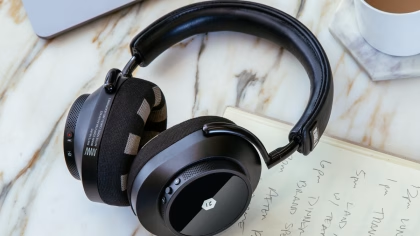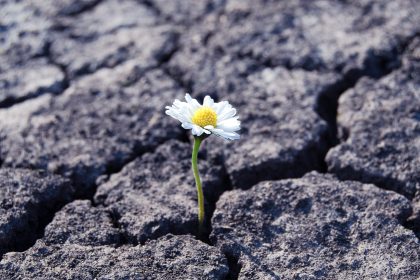Table of Contents
Our brain is always active, at every moment, regardless of what we do. The cells, synapses, and neurons inside our skull interact with each other, resulting in electrical activity that is strong enough to be measured on the head surface. With neuroimaging tools such as electroencephalography (EEG), this electrical activity can be recorded in real-time to better understand the biology behind certain actions we make or thoughts we have. This article will address the topic of EEG channels and how they can offer insights into the biological correlates of human behavior.
Basics of EEG Channels
EEG equipment consists of an electrode net that is placed throughout the head. Some EEG systems can have as few as a single channel up to 25 channels. To begin the recording of brain activity, each electrode is placed on key areas on the skull where significant brain activity occurs. These areas make up channels that record and transmit the activation taking place in that brain region. The voltage at each electrode represents the electrical potential at that point on the scalp relative to a reference electrode or a common reference point.
Monopolar vs. Bipolar EEG channels
With EEG, two different configurations allow you to record the electrical activity in the brain. These are called monopolar and bipolar EEG channels, and each of them has distinct advantages and applications. Choosing between them depends on your specific research, clinical, or commercial needs.
For example, in monopolar EEG channels, all electrodes are referred to as a single common reference electrode. This is commonly placed on the earbone or mastoid bone, usually at quite some distance from the remaining electrodes. An advantage of the monopolar channel is that it provides a more comprehensive brain activity measurement, but this comes with the risk of having more noise interfering with the data.

Bipolar EEG channels involve two adjacent scalp electrodes that capture the brain activity. Instead of referencing each electrode to a common one, as is the case with monopoly EEG, bipolar EEG collects brain activity in the form of voltage difference between pairs of electrodes.
The International 10-20 System for EEG Electrode Placement
To ensure that all electrodes are placed in the right location on the skull, all EGG systems use a formal standard, known as the 10/20 system or the International 10/20 system. According to this, the distance from the bridge of the nose to the lowest point of the skull from the back of the head (normally indicated by a prominent bump) is the reference distance for a given person’s head size.
Two of the most common EEG channel configurations are the 19-channel and 64-channel setups, which should be chosen based on your research objectives and needs. For example, in the 19-channel configuration, electrodes cover the frontal, central, parietal, and occipital regions of the scalp and provide a good balance between spatial resolution and practicality. This EEG set is commonly used in medical contexts, sleep studies, and epilepsy diagnosis.
The 64-channel EEG setup, on the other hand, is used for more advanced studies because it provides a greater spatial resolution. It consists of 64 electrodes distributed across the scalp, which cover more regions that may otherwise be missed in a 19-channel setup. Given its higher electrode density, the 64-channel is successfully used in neuroimaging, brain-computer interfaces, and other applications that require fine-grained spatial information.
Importance of Multiple EEG Channels
Using multiple EEG channels will provide a more detailed brain activity, resulting in more insightful data about someone’s behavior. Besides, it will also result in better spatial resolution, since brainwave activity is captured from different brain regions at the same time.
Since the brain generates different brainwave categories (e.g. delta, theta, beta, gamma, alpha), having multiple EEG channels to record their activity will result in richer data behind certain cognitive tasks and states.
EEG Channel Data Representation and Analysis with iMotions
If you want to take a glimpse into people’s heads and see what engages them, makes them interested, or bored, or gauge their cognitive load during a task, EEG is a reliable choice. As we mentioned earlier in this article, some EEG systems have higher time resolution than others, which means that you can see the brain regions associated with mental and emotional processes in real time. iMotions offers technology that supports real-time measuring and data streaming.
Complete experimental suite
Before you plan your next EEG experiment or task, consider what equipment you need. In most cases, a separate software is required for stimulus display and EEG recording. However, iMotions offers a multimodal software solution that includes EEG, eye tracking, facial expression analysis, and other biosensors (such as GSR, ECG, and EMG). This meets most requirements for study design, multisensor calibration, data collection, and analysis.
Automatic signal processing
The data analysis process from an EEG recording can be messy. Extracting the right signal from each brain region is a task in itself. The iMotions multimodal software automatically processes the signal in your data, giving you a unified output of the recorded brain activity.
Hardware agnostic
The iMotions software can be seamlessly integrated with a variety of leading electroencephalogram (EEG) headsets from producers such as ABM, Neuroelectrics, and Brain Products. Regardless of the headset you choose to go for, iMotions will assist you with the rest of the data processing and analysis tasks.

Conclusion
If you want to elevate your research, the iMotions multimodal software solution might become an indispensable tool. It is an easy-to-use system that supports all stages of the research process, from study design, multisensor calibration, data collection, and analysis. You can even pair it with additional biosensors such as facial expression analysis, GSR, eye tracking, EEG, and ECG/EMG along with survey technologies to create a comprehensive human behavior research experience.
If you want to learn more about our offerings, contact our team at iMotions and see how we can best support your research goals.
Free 59-page EEG Guide
For Beginners and Intermediates
- Get a thorough understanding of the essentials
- Valuable EEG research insight
- Learn how to take your research to the next level












